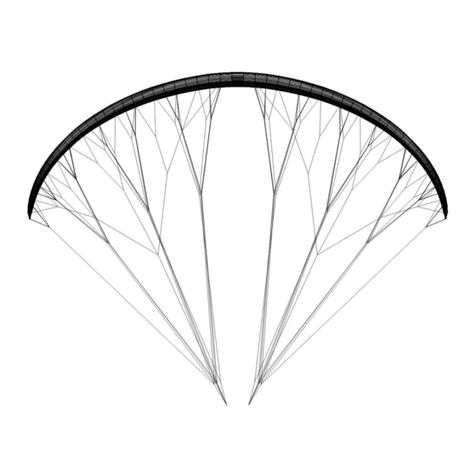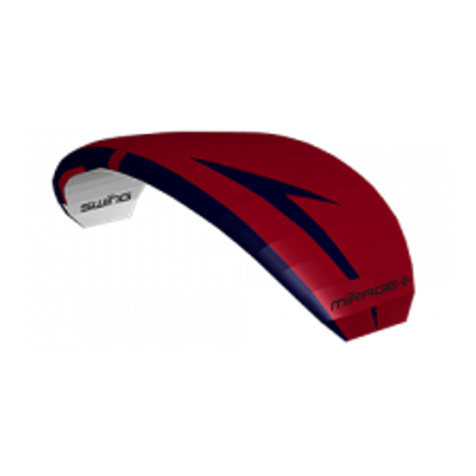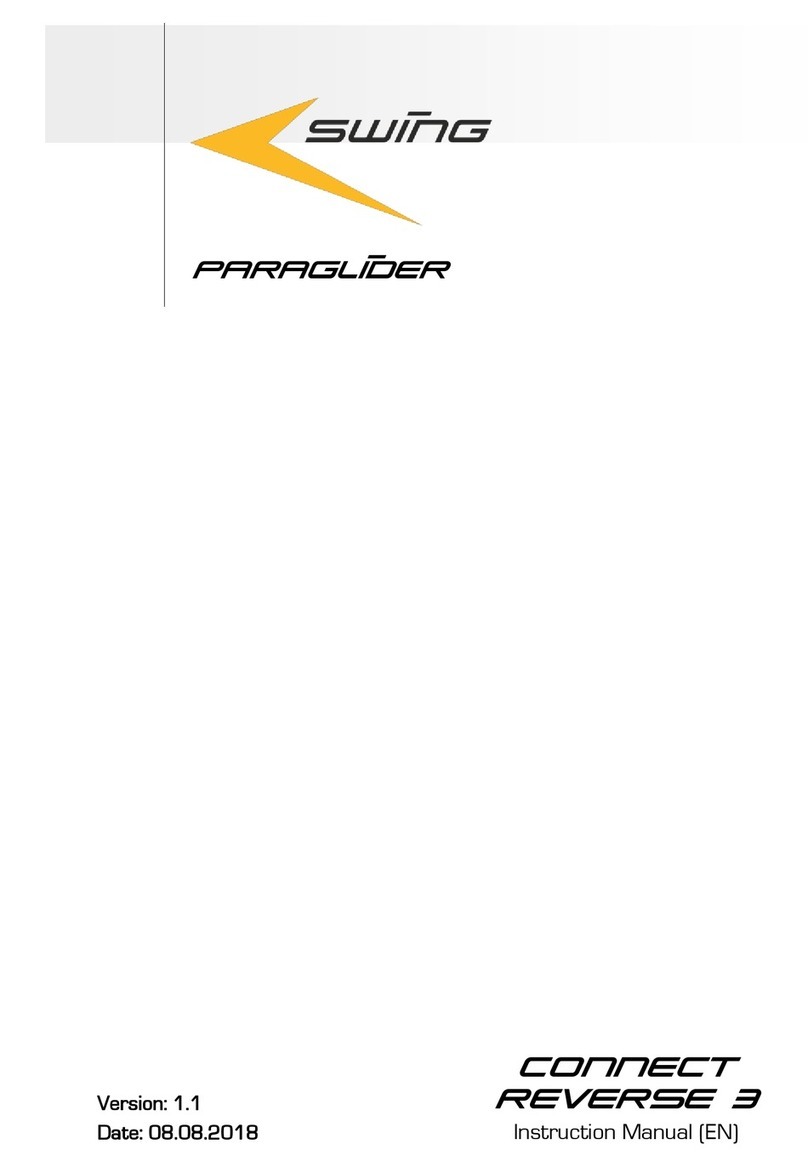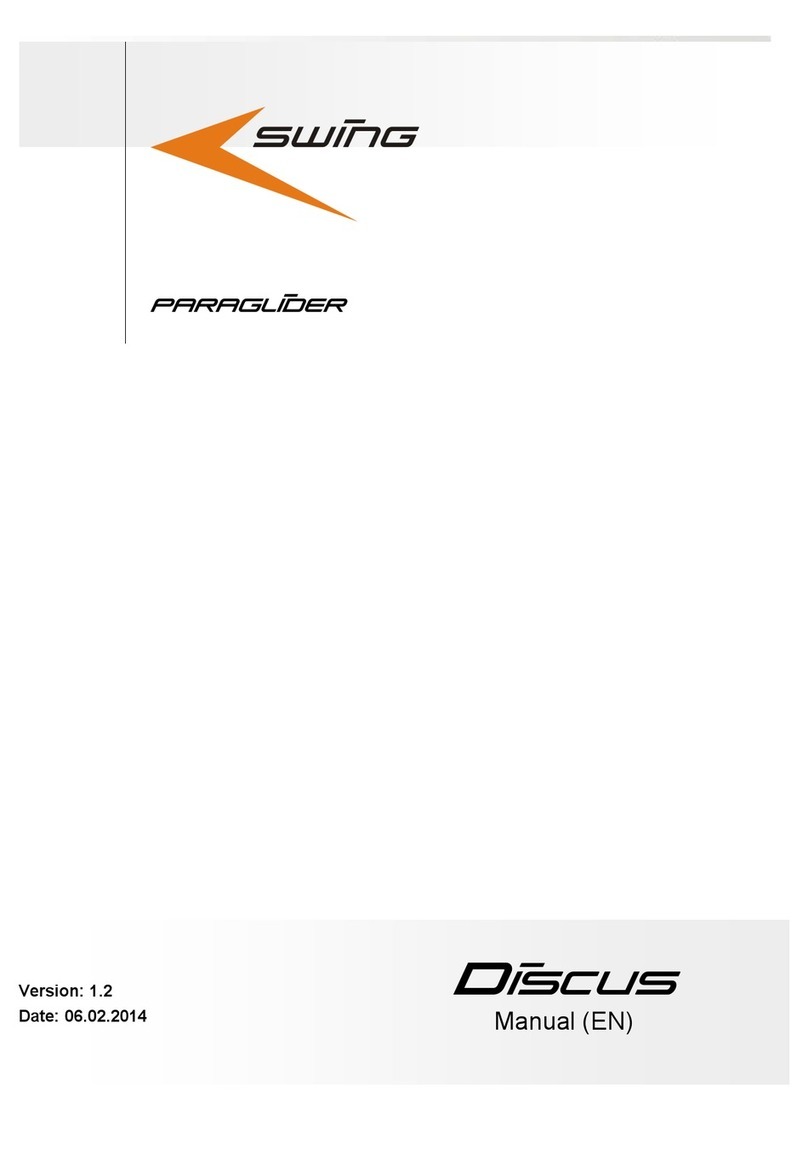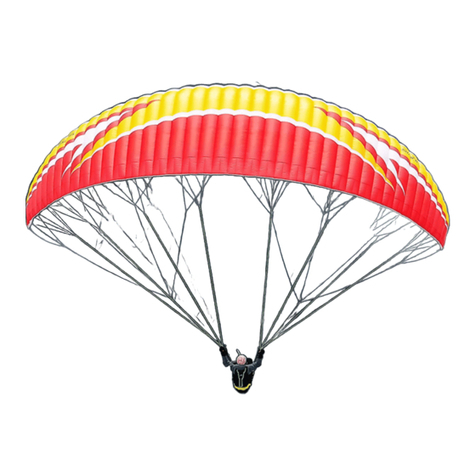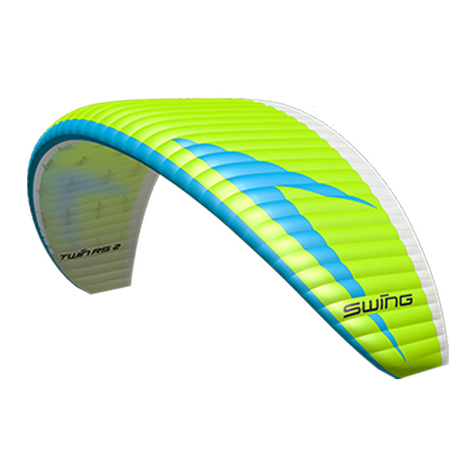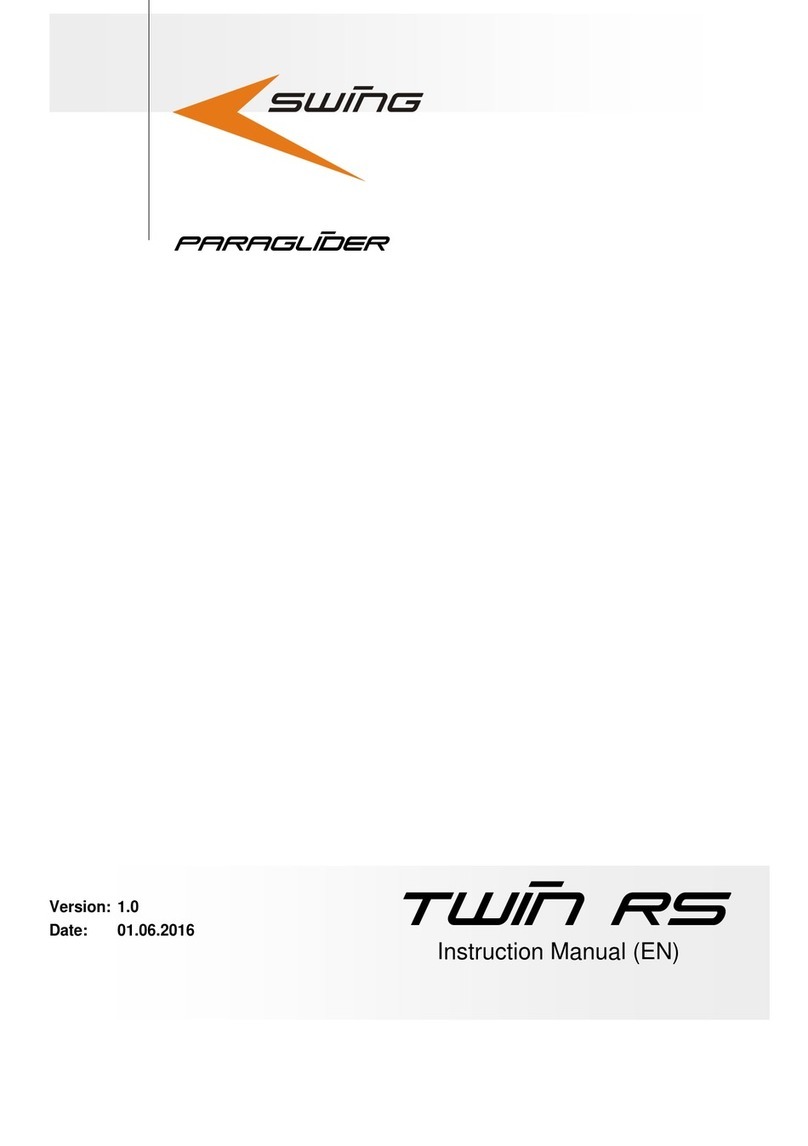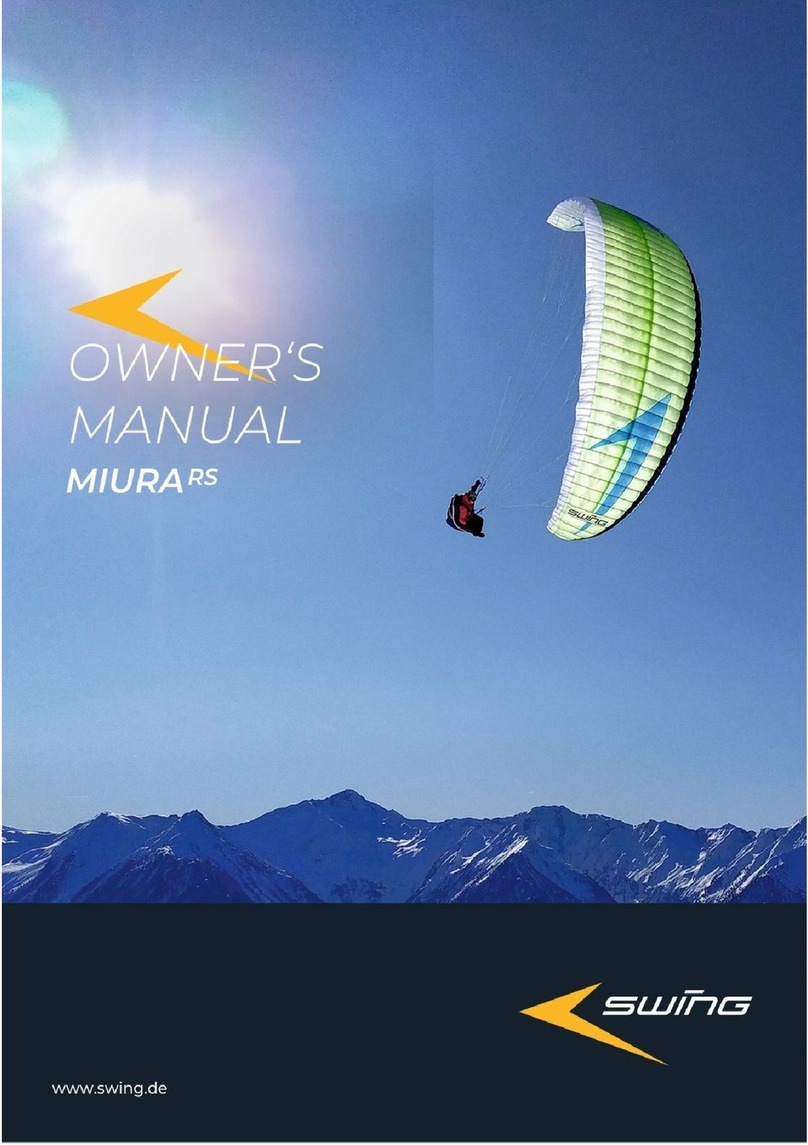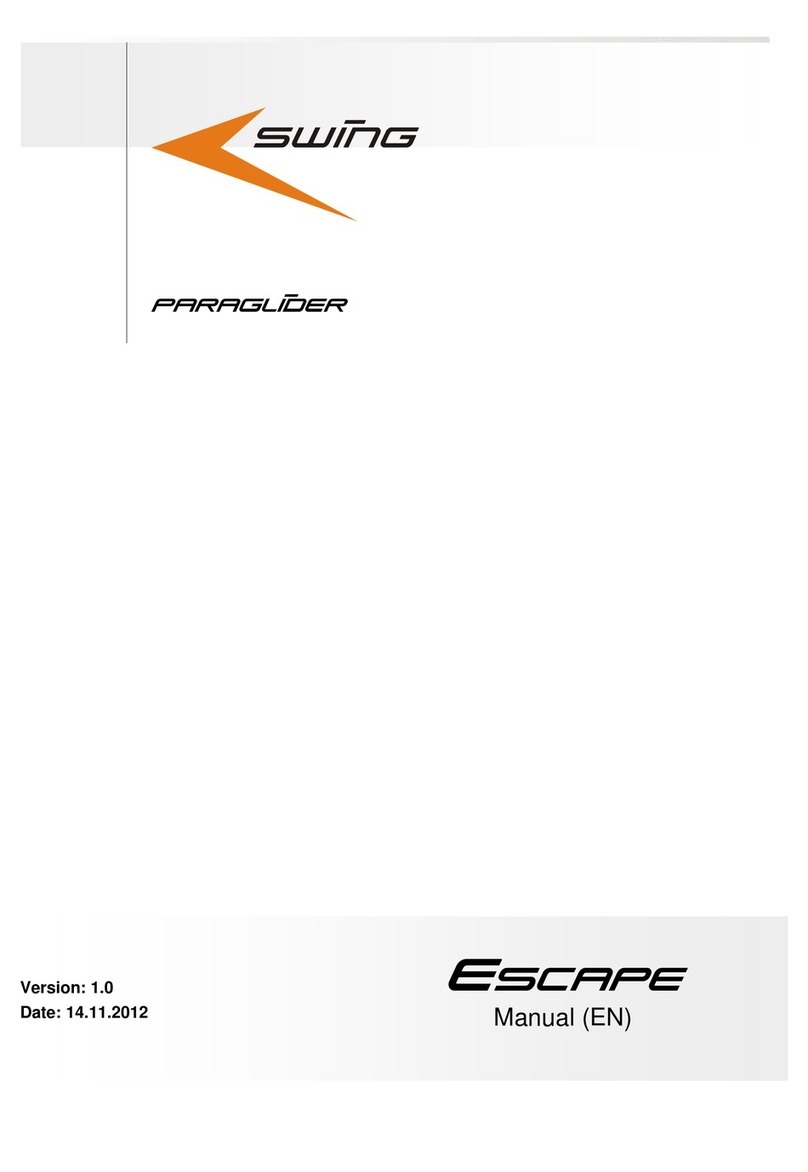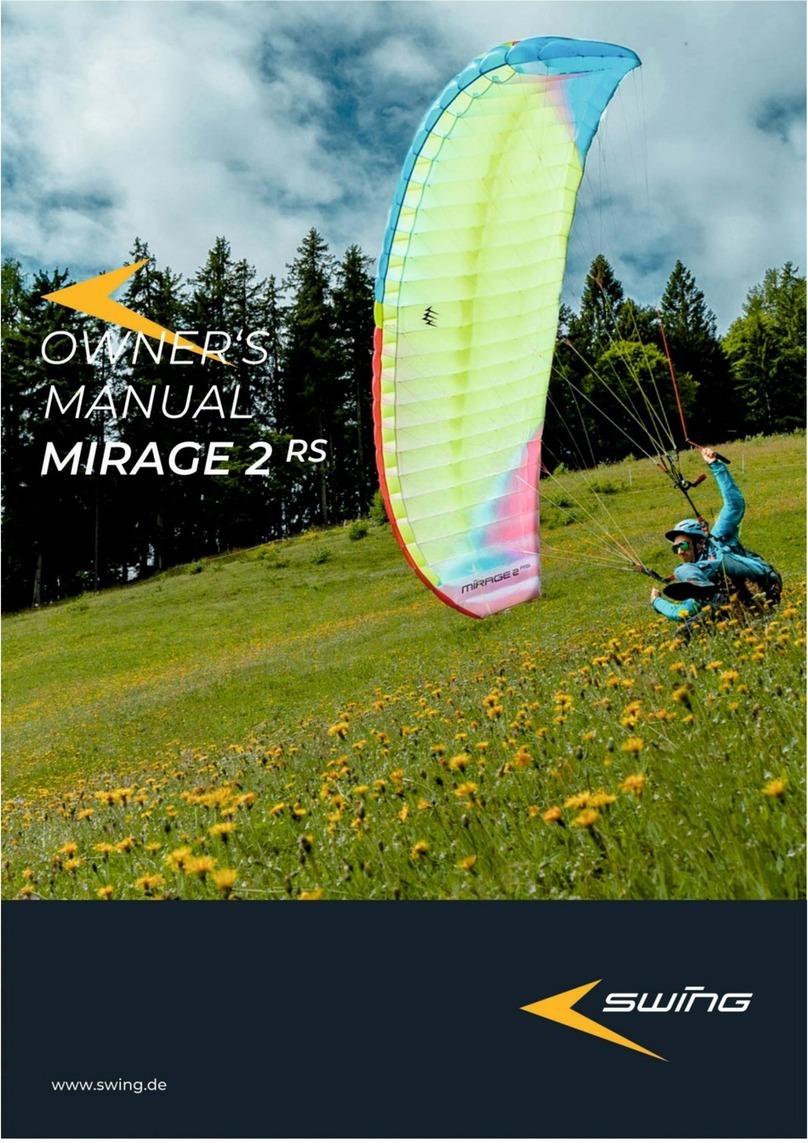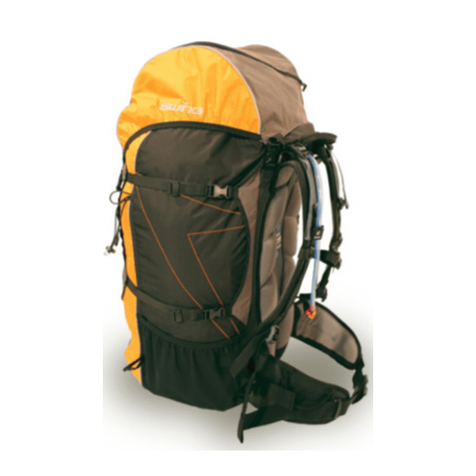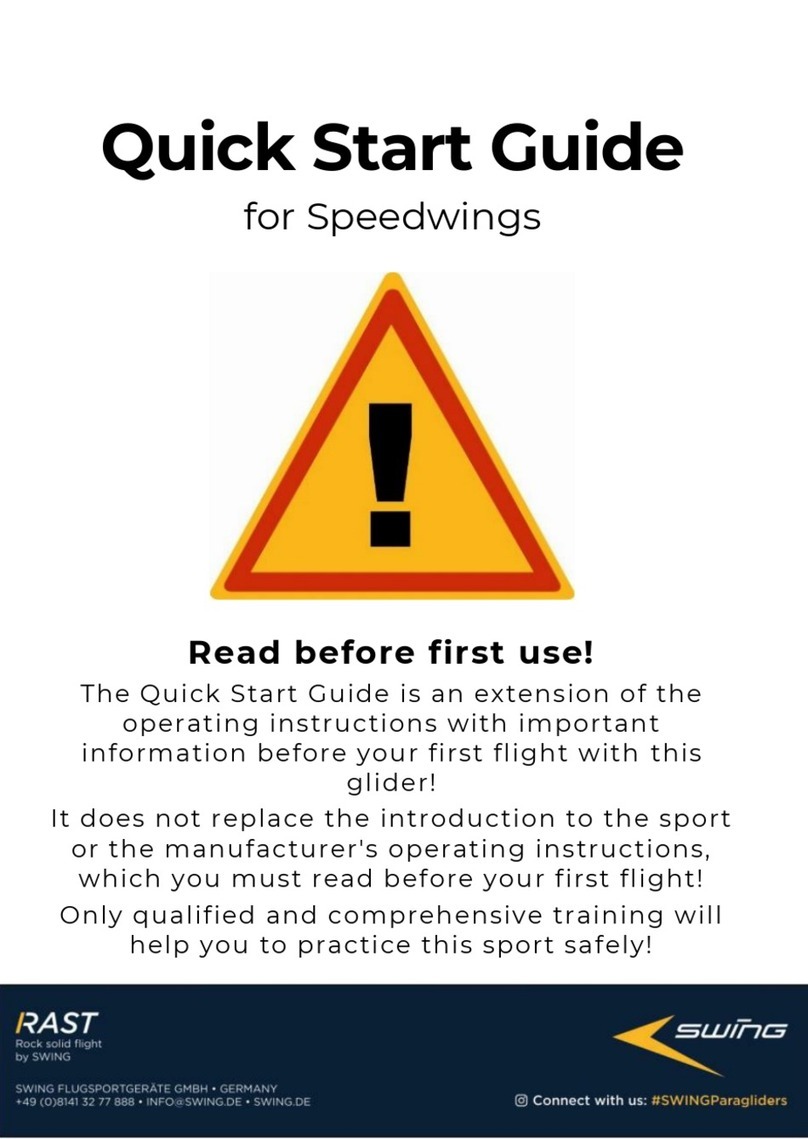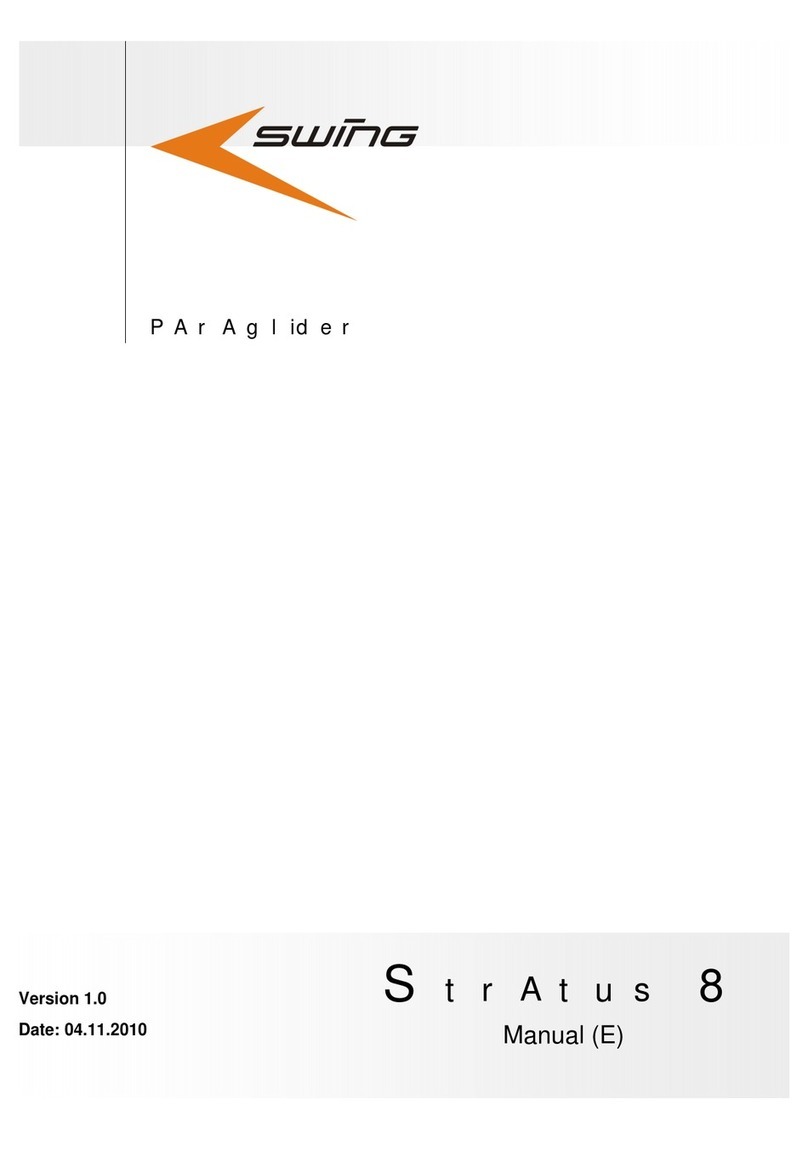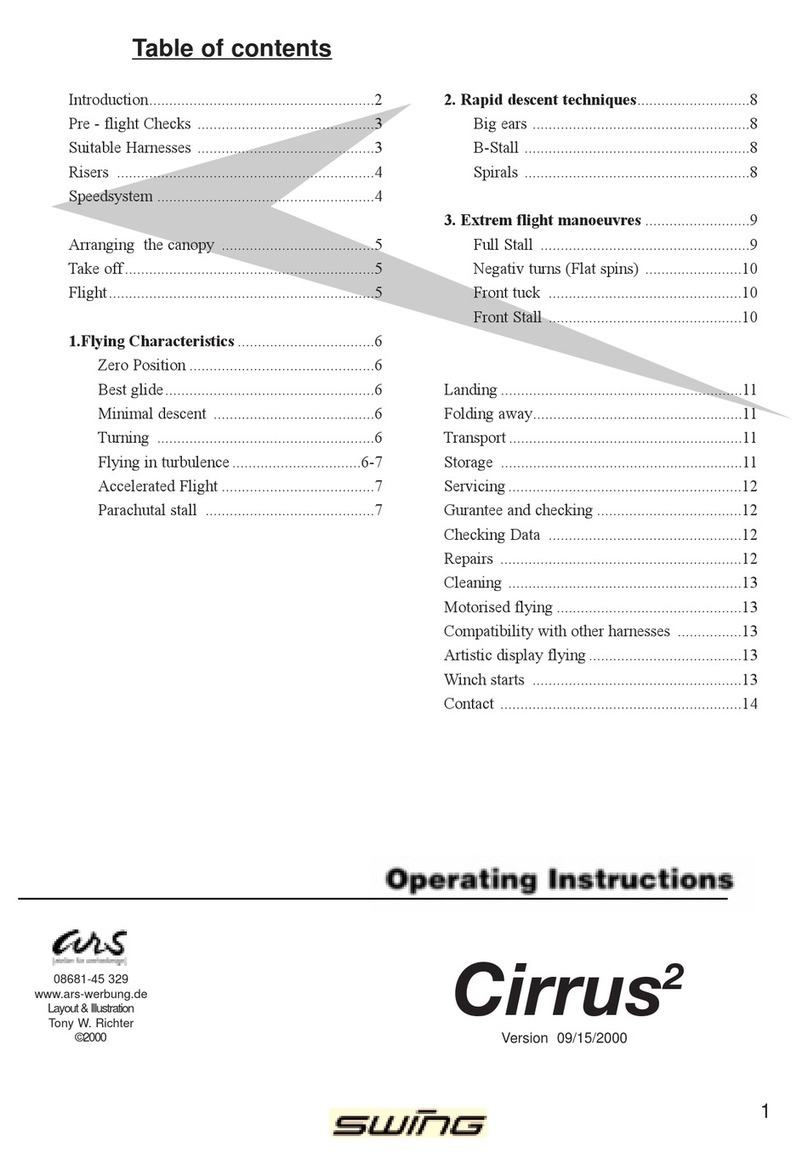
When making the knot, take care that the brake line is the same length as it was before. The
brake line must not be shortened.
You have now changed over the first riser. All of the lines should now be on the paramotor
riser, none of them twisted and all of the quick link openings should be facing inwards (away
from the brake pulley). Check once again that you have also correctly attached the stabiliser
lines to C1. Your paramotor riser should now look like the picture in Fig. 22.
Fig. 22: Paramotor riser with all main lines and brake lines (the right-hand riser is shown
here)
If the brake handles are extremely high up and difficult to reach when used with a motor, it is
also possible to feed the brake lines through the lower pulley in motorised use.
To do this, it is essential that you lengthen the brake lines by the distance between the
pulleys (18.5cm). This requires a longer main brake line, which you are able to obtain from
us for your paramotor riser. The longer brake line generally already has a second mark for
the lower pulley. If this is not the case, make a second mark on the brake line, 20cm below
the original mark (towards the end of the line).
We would like to point out to you once again that the brake lines must not be shortened,
as this can cause dangerous changes in flight behaviour and extreme flight behaviour.
2.5. Preparation of the second side
After you have finished changing over the first riser correctly, hang up the two risers for the
other side next to one another. Hang the quick link which you previously put to one side onto
the B-riser with the open side facing inwards (the side away from the pulley).
You are now ready to change over the second riser in the same way as the first riser.

